Stymied by the rare format slide you found in your grandmother’s photo collection? Never fear, Jens Peterson of EverPresent explains the many different types of slides and slide formats you might come across while organizing your family’s treasured photos.
We are thrilled to contribute to the APPO blog to talk about rare format slides. We scan a million slides a year at EverPresent and they are a fun and easy way to relive your old family trips and special occasions. But the word “slides” means different things to different people. Whether you’re working with a client, or sorting through your own collection, there’s a good chance that you’ve already come across standard 35mm format slides and film.
Over time, 35mm became the standard for mass-production and consumer photography; it’s big enough to capture high-quality images but small enough to be portable. But there’s also a handful of rare slide formats that you might have never seen before, or you’ve only heard of them and wouldn’t know how to identify them. Though these formats are less common, they’re just as beautiful–some even more so–and they deserve a closer look. In this post, we’ll be discussing the differences between the different slide film formats, a little bit of their history, and how you should handle them for yourself or your clients.
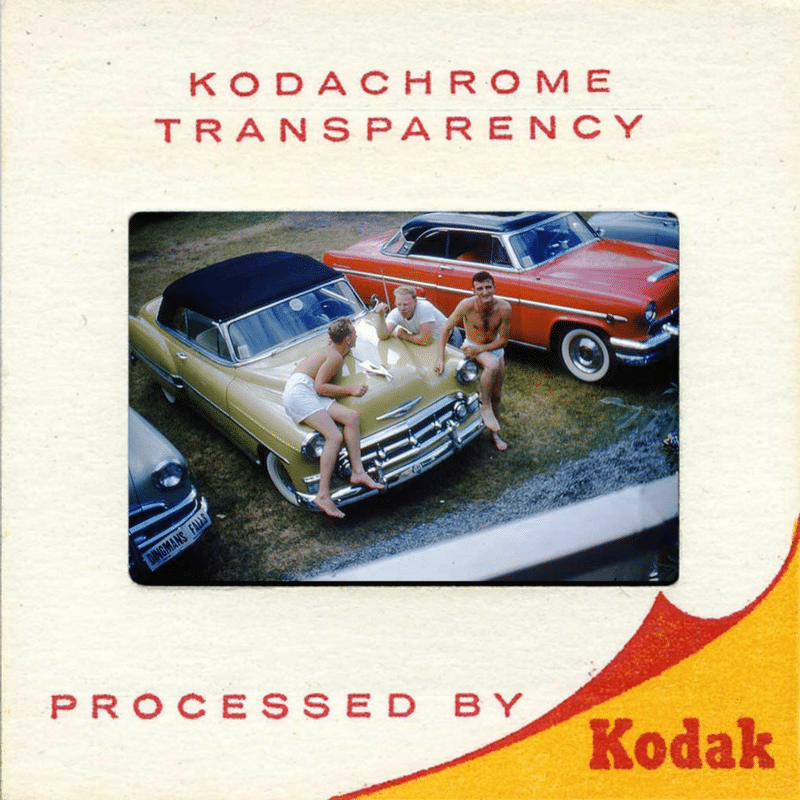
How to Identify Different Slides
Slides can be color or black-and-white. Slide film is also called ‘positive’ or ‘reversal’ film because unlike the ‘negative’ film where it’s hard to distinguish the image, it captures images that look like whatever was photographed.
Slides are pieces of celluloid that are often framed in mounts made of cardboard or plastic. Most mounts are roughly two-inch squares, but you can tell different slide formats apart by the size of their actual images:
110 Format
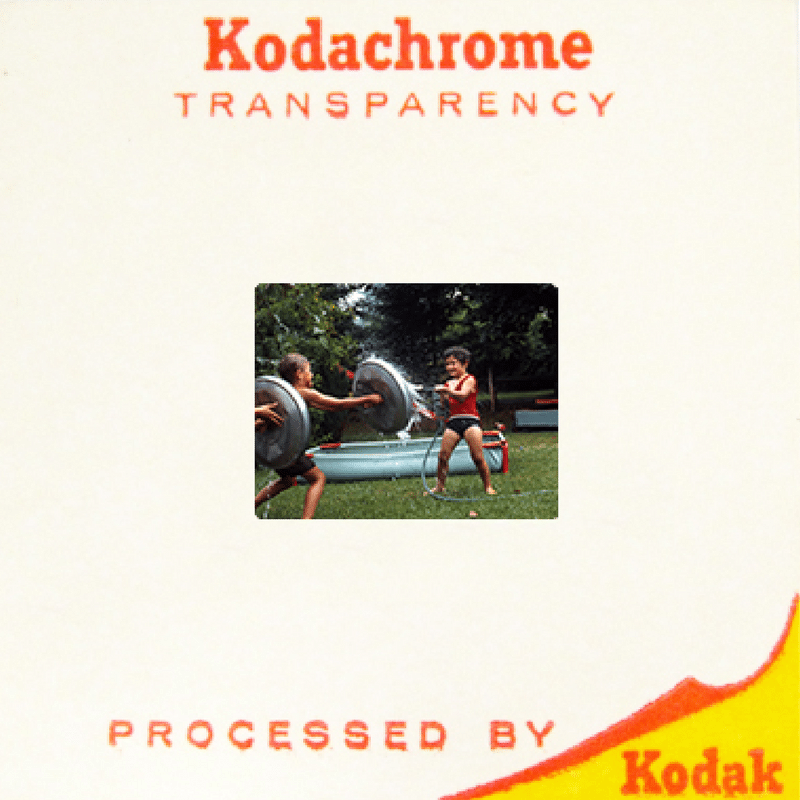
Image Size: 13mm x 17mm
Mount Size: Usually 2” x 2”, sometimes 1” x 1”
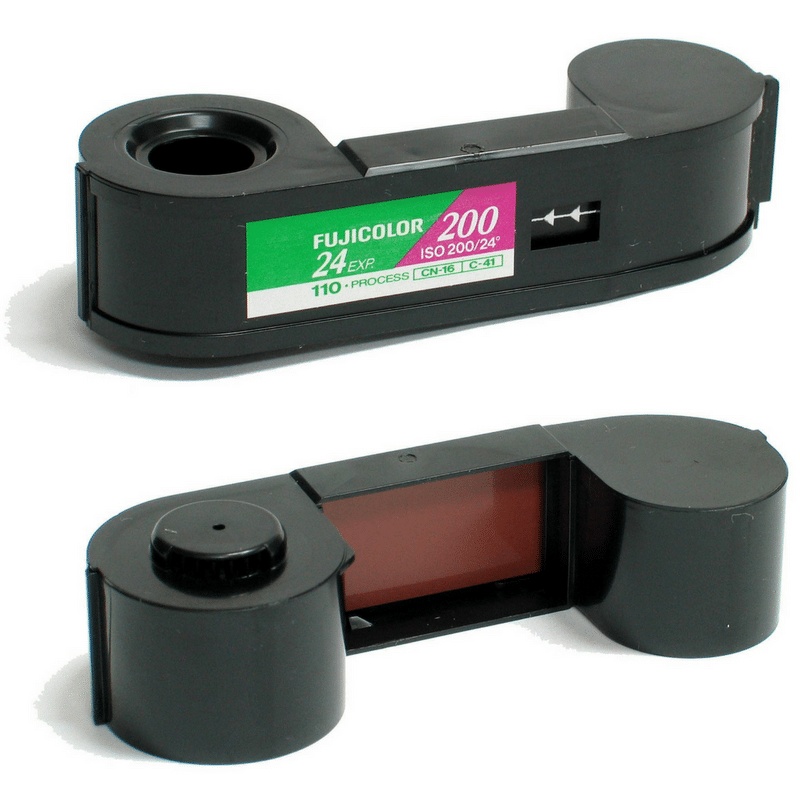
110 format film
35mm Half Frame Format
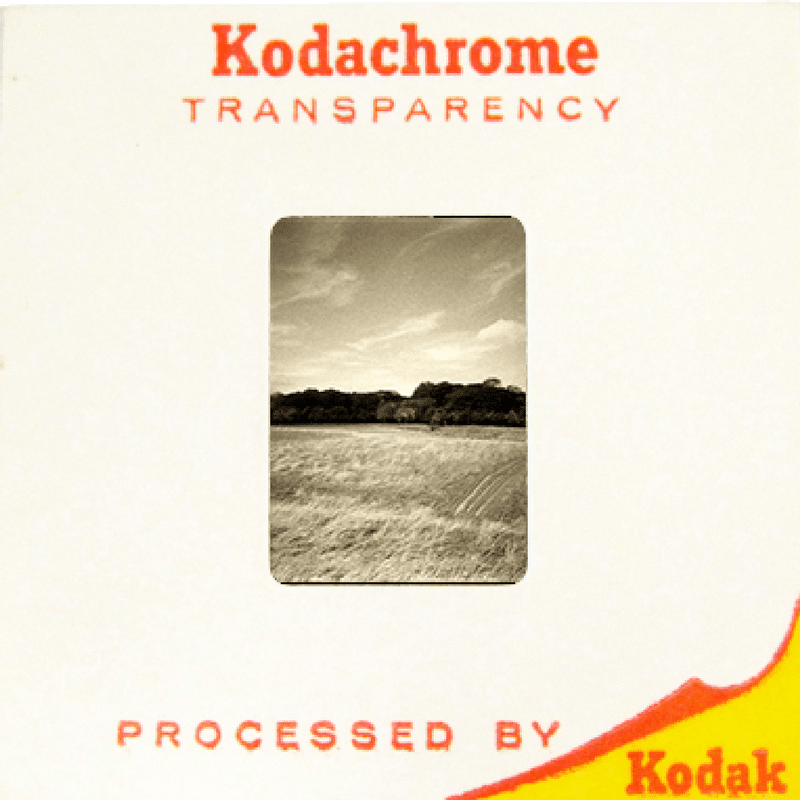
Image Size: 18mm x 24mm
Mount Size: 2” x 2”
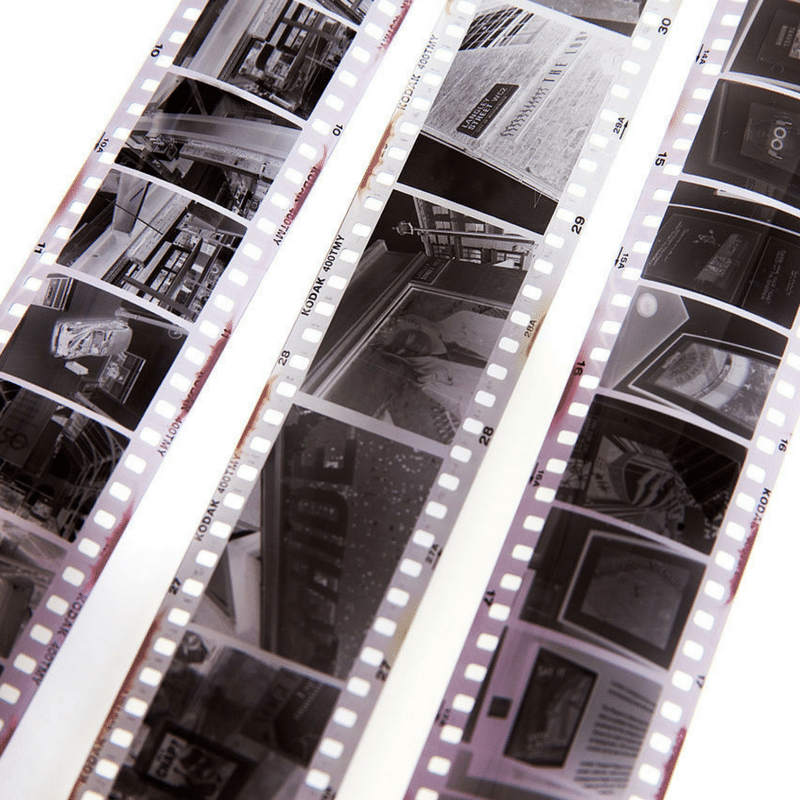
35mm half frame negatives
126 Format
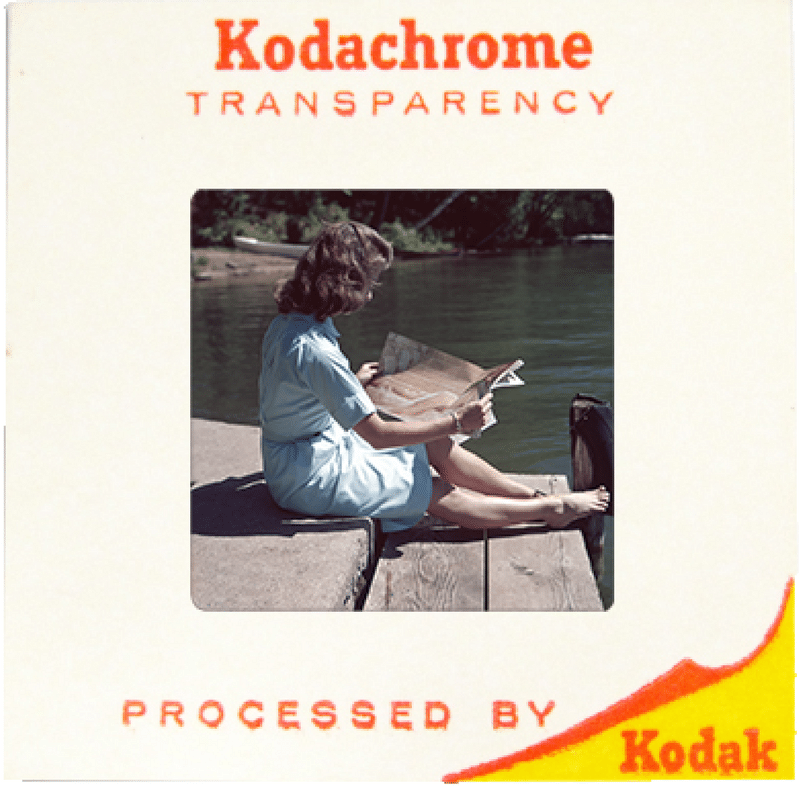
Image Size: 28mm x 28mm
Mount Size: 2” x 2”
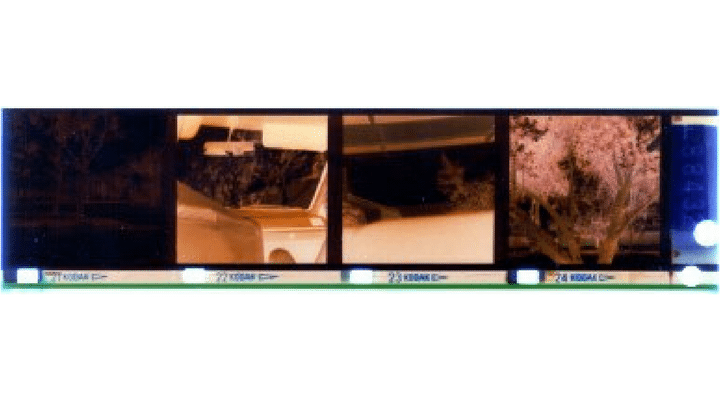
126 format negative strip
127 Format
There is some debate as to whether or not these count as medium format.
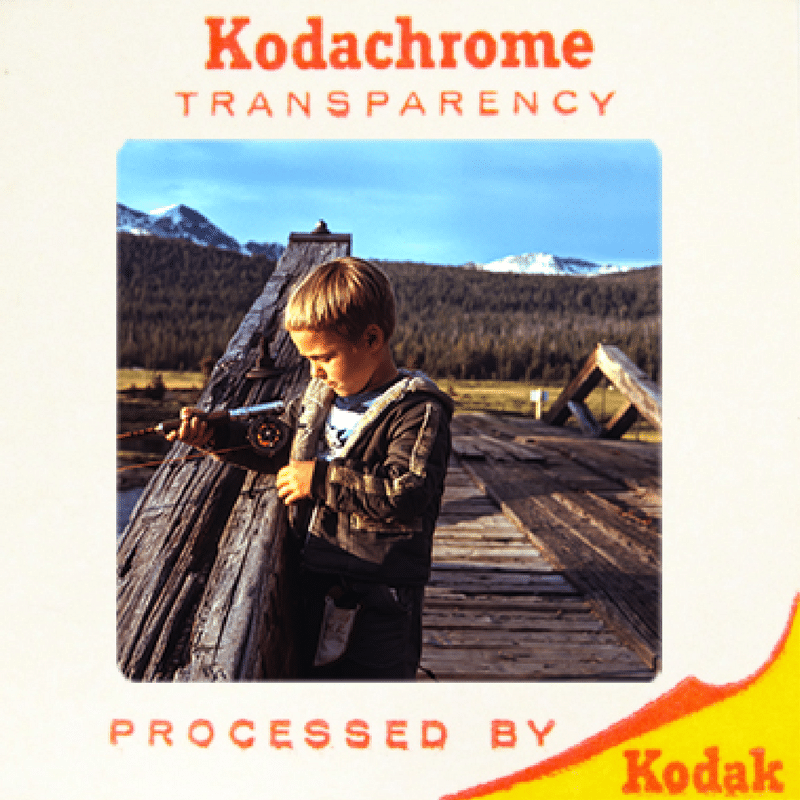
Image Size: 40mm x 40mm
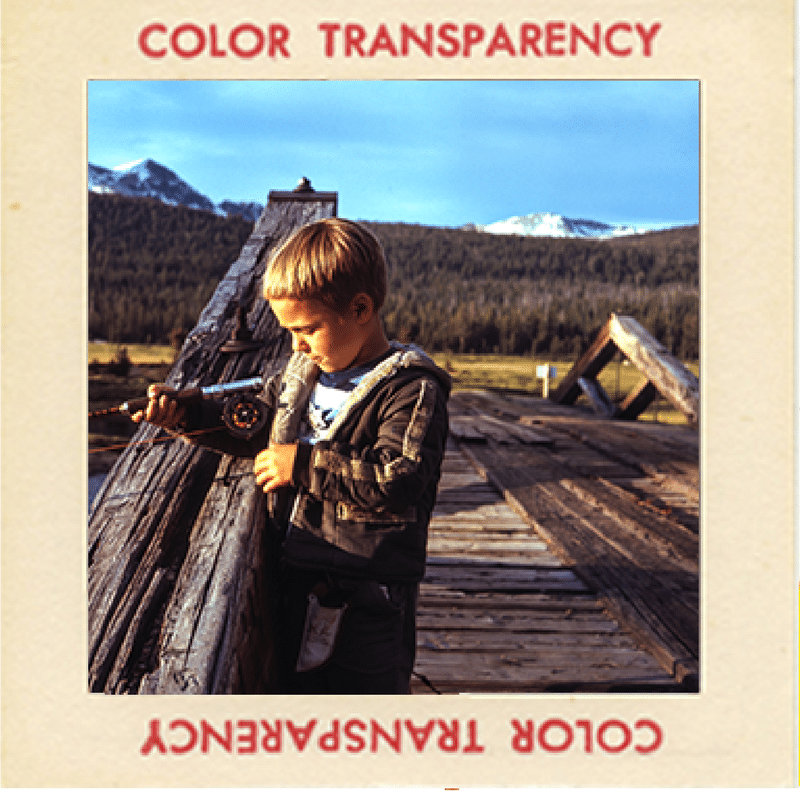
‘Superslide’ Image Size: 46mm x 46mm
Mount Size: 2” x 2”
3D Stereo Realist Slides
3D Stereo Realist Slides are rectangular with two nearly identical images on opposite ends.
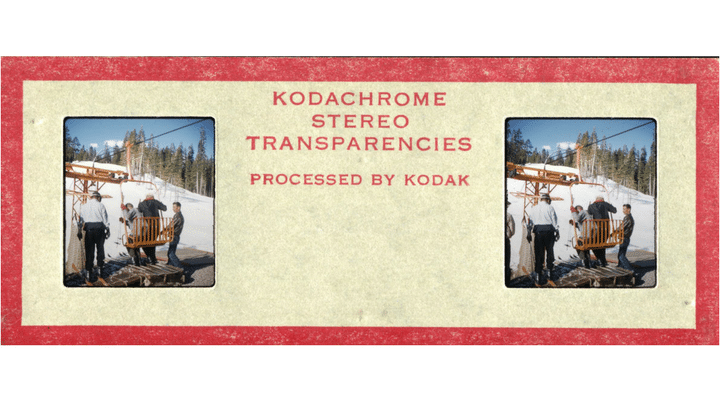
Image Size: (2) 24mm x 23mm
Mount Size: 4” x 1⅝”
120 (Medium) Format
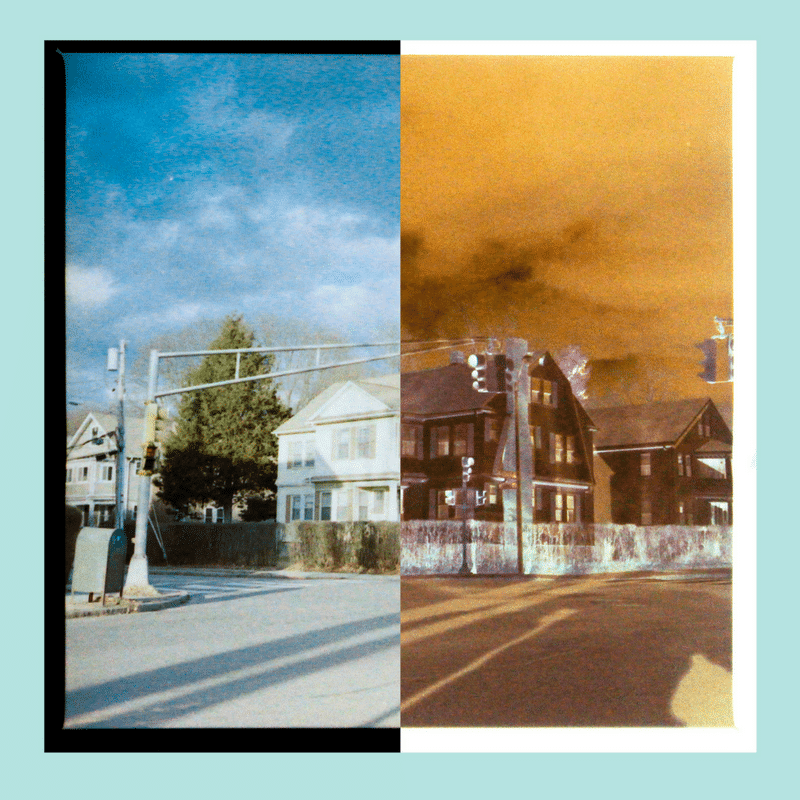
Medium format slide film and negative
Image Size: Larger than 35mm, smaller than 4” x 5”
Mount Size: Varies, not always mounted
Large Format
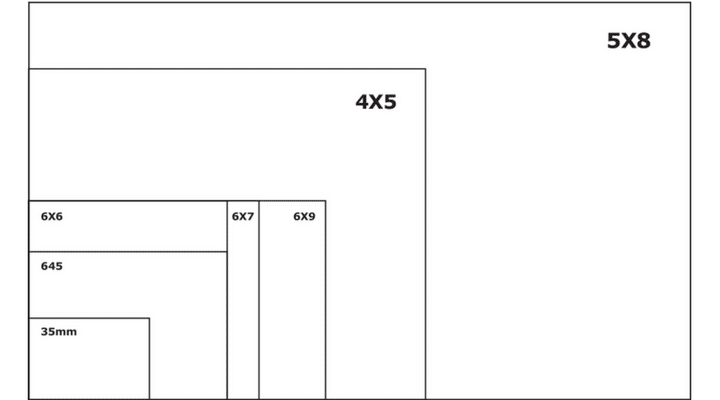
Image Size: 4” x 5” and larger
Mount Size: Varies, not always mounted
Medium and large format slides & film look very much the same. You can use this chart to determine whether you have medium or large format.
[bctt tweet=”Check out the Rare Format Slide Guide to help with the slides in your photo collection.” username=”photoorganizers”]
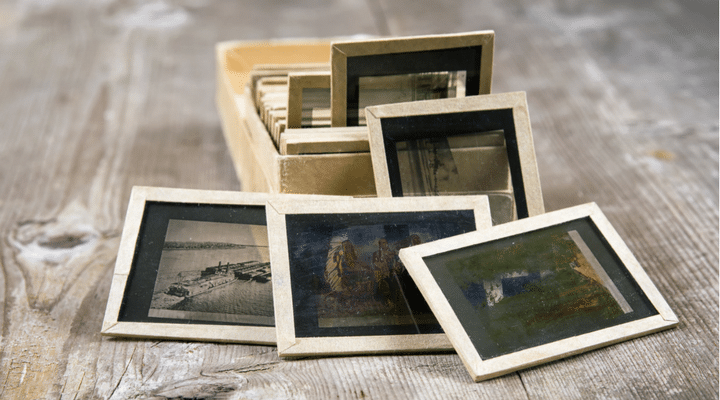
Behind the Transparency: A Look into the History of Rare Format Slide Film
Slide film’s sharp, high-quality images have held its popularity among professional photographers and photo enthusiasts. Developing slide film, however, requires a costly and complex series of chemical baths. Digital photography is now more popular because it’s a cheap and easy way to take great-looking photos, but the history behind each rare slide format offers a glimpse into the lives of the people who made them.
110 Format
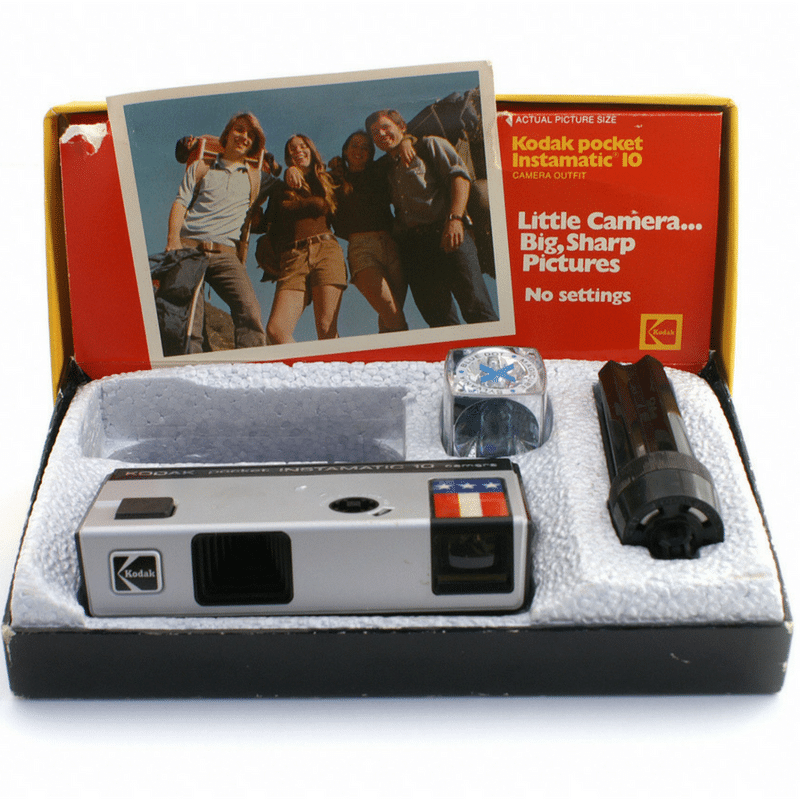
Kodak introduced the 110 format in 1972 for its Pocket Instamatic cameras (pictured left). Some people preferred this small format because it fit into lightweight, portable cameras. The film comes in cartridges that can be loaded into and removed from the camera. Kodak stopped making 110 film in the ‘80s and compatible cameras in the ‘90s, but other companies have continued making both.
35mm Half Frame Format
If you find slides in the 35mm half-frame format, there’s a good chance they come from the ‘60s. 35mm half-frame cameras doubled the number of pictures that could fit on a film roll by only using half of a frame to store each shot. The extra ‘bang for your buck’ could be what made this format so popular, but the small size of the cameras may have also played a role. When the Rollei 35 was introduced as a small 35mm camera that took full-frame pictures, its success could be a sign that people cared more about the size of the camera than the film format.
126 Format
These slides could be around 50 years old! The ‘126’ label was first used for a line of film rolls in the early 1900s, but Kodak repurposed the category in 1963 as a cartridge-based format for its Instamatic cameras. 126 Format film was discontinued back in 2008, but it could always make a comeback.
127 and 127 ‘Superslide’ Format
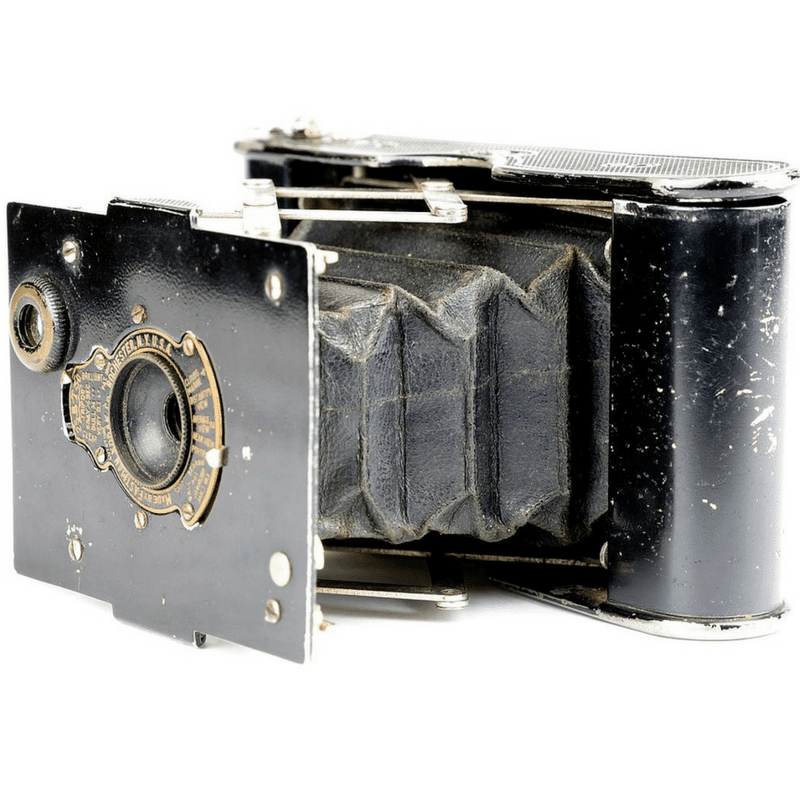
“The Soldier’s Camera”
Like many formats, 127 film was introduced by Kodak. 127 slides are squared off and bigger than the rectangular 35mm slides, and became a common item in tourist gift shops because it’s easy to view the landmarks and scenes they depict. There is some debate over whether the 127 counts as ‘Medium’ format, which is broadly described as being larger than 35mm but smaller than the 4” x 5” large format.
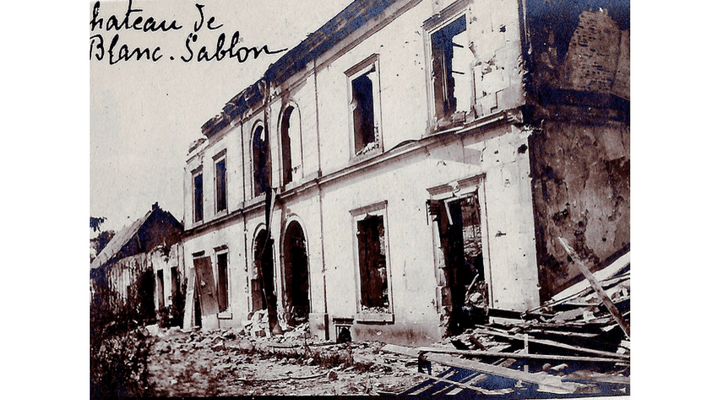
A photo taken in France during World War I with a vest pocket camera. Photo credit.
Eastman Kodak released the roll-style 127 format in 1912 for its foldable Vest Pocket Kodak, earning it the nickname ‘Vest Pocket Film.’ One version of the camera was even marketed as “The Soldier’s Camera” during World War I. The 127 format was overtaken by the popularity of cartridge film in the ‘60s, but it’s still in production today.
120 ‘Medium’ Format
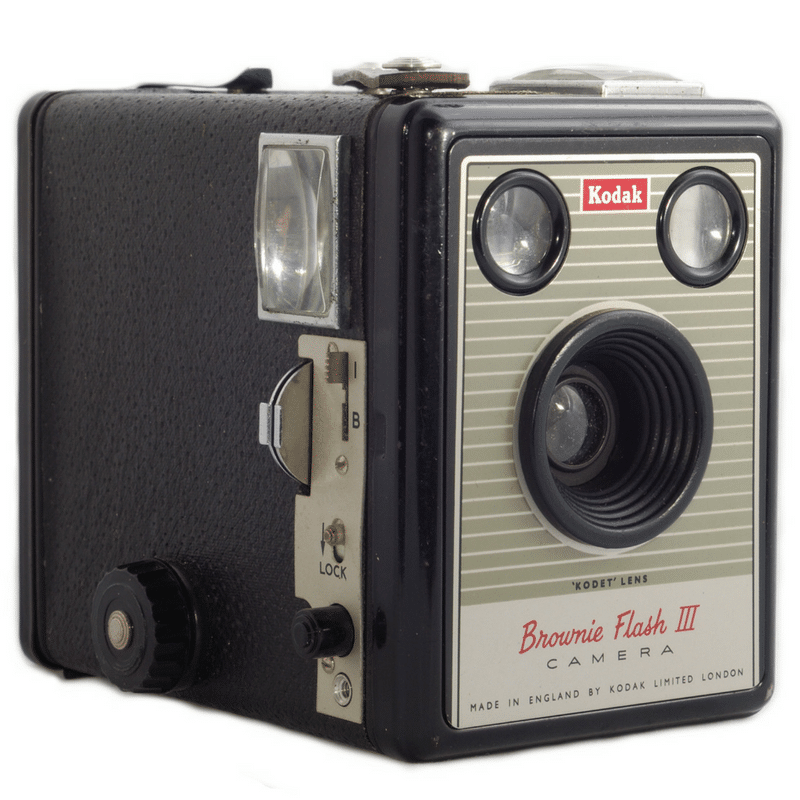
The 120 format was first released by none other than Kodak in 1901 for the Brownie No. 2 camera. It was widely used throughout the first half of the 1900s and is still available as a specialty product to a niche market of photographers and photo lovers.
120 format film is included in the ‘Medium’ format range, with an image size of about three to four times that of the 35mm format. Its bigger size can capture images with a much greater amount of detail, so it can be scanned and resized into a larger image without becoming grainy or distorted.
Large Format
‘Large’ format transparencies or ‘sheet film’ are 4” x 5” or larger, and they’re not always mounted in cardboard or plastic like the other formats listed here. Like medium format slides, large format’s size allows it to capture an incredible amount of detail in every image. That extra information turns into beautiful reproductions without a loss in quality when the images are resized to be even bigger.
4” x 5” is the most common size for large format slides and transparencies. The format was popularized by various camera models in the 1930s through the 1950s. The film comes in single sheets that have to be loaded into the camera for every single picture. Shooting in large format is expensive and time-consuming, so most of these images are captured with careful thought and preparation. For more information about medium and large format negatives, you can visit this page.
3D Stereo Realist Slides
Also known as stereograms, stereo slides were popular in the late ‘40s to mid-‘50s so it is possible that your stereo slides are more than half a century old. Each stereo slide has two slightly different images, one on each end, to create the illusion of depth when viewed at the same time. Stereo slides are meant to be viewed through a special device called a stereoscope, but the images are so similar that holding them up to the light works well too. The stereoscope was invented in 1838 before photography existed, so drawings were used instead of photos in its early days. For more information about stereo slides, visit this page.
What You Can Do With Your Rare Format Slides
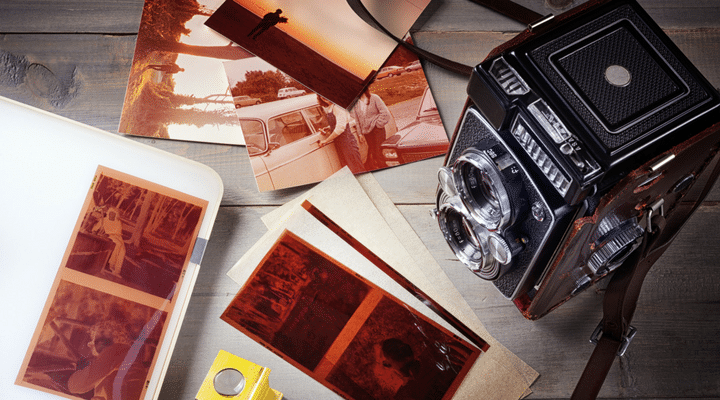
Medium format slide film and other slide formats can be viewed on a lightbox.
Viewing
Now that you know all about rare slide formats, it’s time to enjoy them. You can view slides in these different formats through a projector, a lightbox, or simply hold them in front of a light source to travel back in time in high detail and vivid color. Stereo slides need to be viewed through a stereoscope to get the 3D effect, but this gadget isn’t necessary to enjoy either of the two images on its own.
Care
Slides should be held by their edges to avoid damage from scratches and fingerprints. Try not to touch the slide film while handling, especially if you haven’t washed your hands recently. Fingerprints are difficult to remove from slides, and the memories they capture are too priceless to damage. Slides are also susceptible to mold, so make every effort to store them in a cool, dry place. Dust tends to build up on the slide film over time, so wipe it off with a soft cloth or give it a quick burst of compressed air to remove dust before viewing or scanning them.
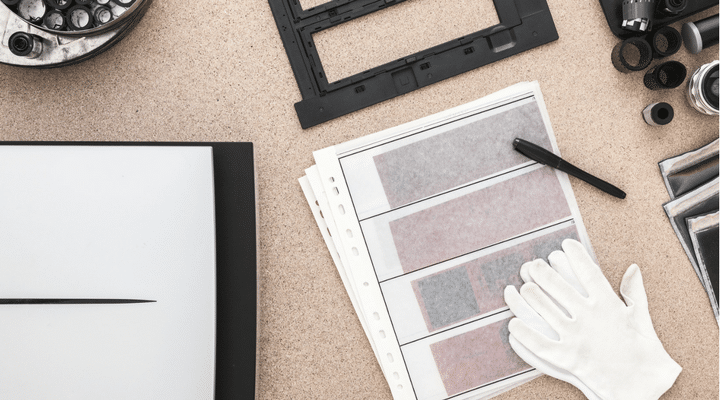
Digitizing
The process of scanning and editing slides is shaped by their format and condition. Smaller images like those on the 35mm half frame and 110 formats can only capture a finite amount of detail, so you should scan these at a high resolution to pull as much information as you can, and avoid enlarging these images so much that they appear grainy. Slides and transparencies in the medium and large format categories can store fine details and look beautiful when scanned or printed, even when they’re enlarged significantly. Be sure to follow the steps above when caring for your slides, because fingerprints and dust are not always visible until the slides are scanned and viewed on a computer screen.
If you have multiple slides, consider investing in a tray so you can scan a few at the same time. Slide trays also help keep the images properly rotated, which minimizes time spent in editing. Some slides and transparencies don’t fit into any special trays and need to be scanned freely; these may show a strange pattern of distortion called ‘Newton Rings’ which can be resolved by placing the film under a piece of anti-Newton Ring Glass before scanning.
Lastly, if you’re digitizing stereo slides, remember that the difference between the two images is barely noticeable. You could get away with scanning just one of the two images in a 3D stereo slide without missing out on anything significant from the unscanned side.
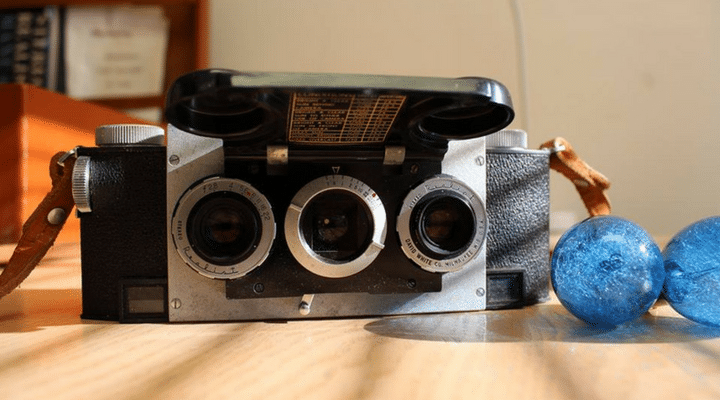
Conclusion
Knowing when a specific rare format slide was produced or discontinued can help you pinpoint the era that a slide collection comes from. Being able to tell whether a particular slide is a 110 or a 120 can make a huge difference when deciding on the best way to store, scan, and share it. Armed with this knowledge of rare format slides, you’ll be ready for any curveball that comes your way. If you’re interested in more information and tips for scanning and identifying different slide formats, you can learn more here.
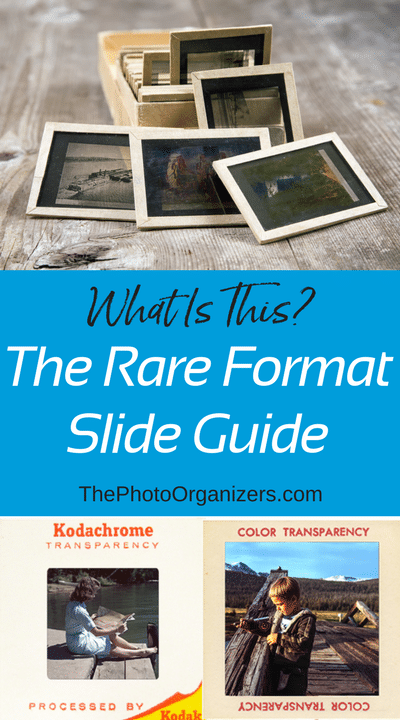
If you need help organizing and preserving your lifetime of photos, videos and keepsakes, find a photo organizer near you at the Association of Personal Photo Organizers.

Jens Peterson is a Photo Department Coordinator at EverPresent. When he’s not digitizing or conducting quality checks, Jens writes digital content for the company’s marketing team. He brings a passion for media production and communication into both roles.

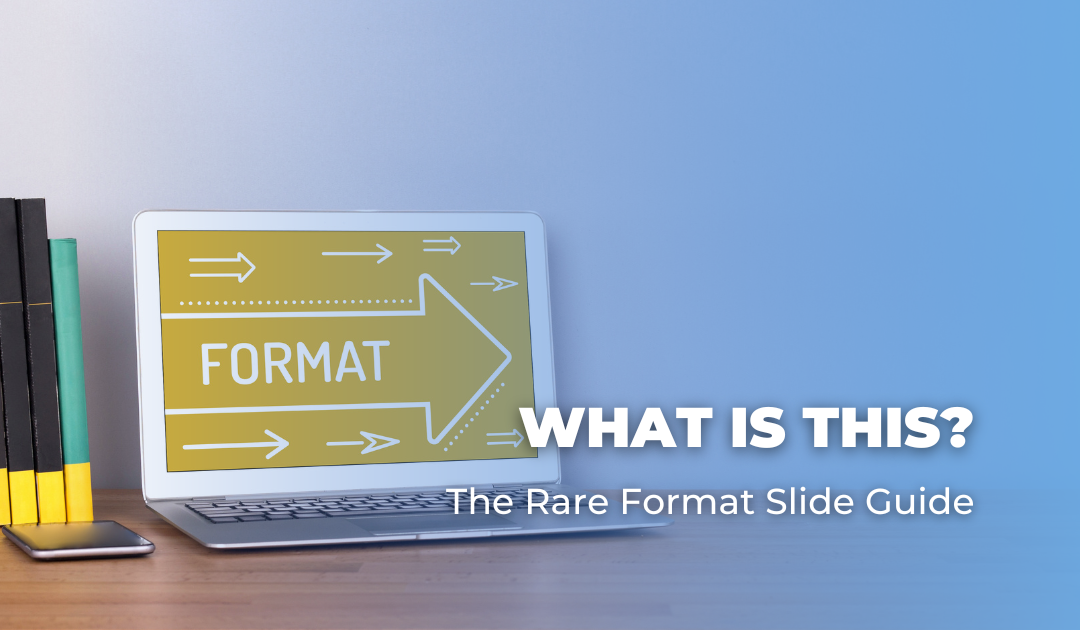
This post gives me a stomach ache. That’s because several years ago my dad had all his slides digitized and made CD copies for all of us kids. Sounds great, huh? Well, some of his best work, of us kids when we were little, was in Superslide format (I’m going from memory, and guessing, based on the information in this post), and to make the images fit the automated process he chose to do the digitizing for him he CROPPED THEM. With scissors. (These were NOT images that needed cropping. I could cry just thinking about it.) If only I’d joined APPO sooner (and knew what he had in mind) and could have stopped him!
This was a great history lessons in regards to the origins of various slides and formats. I could imagine how using some of these formats can become costly. It makes me somewhat sad to notice how pervasive the Kodak brand was in those times knowing their ultimate demise.
Any suggestions for scanning superslide images? I have thousands of them that I have acquired over the years. I have Epson V550 and V500 scanners but they are not geared for this size. Ideas?
We do them on our Epson V850, 9 or 12 at a time. Takes ~ 24 min using Vuescan software. Time-consuming for the last 1000+ that we did but beautiful results.
Hello,
I’m looking for a scanner that can handle:
126 negatives
127 negatives
120 negatives
120 paper mounted slides
35mm negatives
35mm mounted slides.
Which scanner would you recommend for the film formats I have?
Thank you,
David Emert
I would recommend the Epson V-600.
Hi, I found some slides in a box of family photos. The mount is 2 3/4″ square and the photos are 2″. I’d like to get them digitized, but I don’t know what kind they are. Can you help?
Hi Robyn,
These sound like a type of medium format slide. Some folks in the APPO network will digitize these, and so does EverPresent. This blog post has a few links to EverPresent’s site – get in touch and we’ll help you figure out what kind of slides you have!
Take care,
Jens
I have 150-200 stereo slides from the 1950’s. I had them copied 15 years ago at a lical photoshop, and the results were not good. I would like to have you copy them. If I sent one slide, can you provide a sample?
Hi Robert,
Some APPO members can do this – or you can follow the links in this blog post to get in touch with EverPresent. We’d love to help!
Jens
who is best to have 1000 slides scanned and digitized.
they are kodachrome stereo slides
Oh hi Mark! We digitize stereo slides every day at EverPresent – you can follow the links in the blog post to check us out. We hope to hear from you.
I Purchased a vintage 1950’s slide of The New Frontier / 114 Las Vegas Nevada 114-6 I wanted to know the significance of the 114 ??? Thank you, Robert
Hello Robert,
Some travel destination gift shops used to sell scenery/landmark slides like this one. That “114” is most likely a serial number to identify this specific image’s place in a larger collection of photos.
Hope this helps!
Jens
Does anyone make full frame slide mounts for 35mm film. what I’m looking for is a slide mount that has a slightly larger opening than the image area of a 35mm image so I can copy the full image area plus a slight border around the image.
Hi Mike,
There’s an older breed of 35mm slide film called “828” with a slightly larger image area. We sometimes see it in mounts with the larger opening you’re describing, but they don’t seem to be for sale online.
Three recommendations if you’re going the DIY route::
(1) Buy a standard 35mm slide mount and carve out some extra space in the opening.
(2) Scan the unmounted film under a sheet of Anti-Newton Ring glass to capture the whole image, then use a free program like Irfanview to add a border to the outside of the image.
(3) Scan the film in a standard 35mm slide mount and adjust the crop area to include some of the border from the mount. You might lose a small amount of information, but the mount should appear as a solid black border if you’re scanning the slides as transparencies.
Happy trails!
Jens
Hi all
I have a few slides from the 50’s & 60’s which are on 828 film and I am having great difficulty obtaining suitable mounts for them.
Does anyone have any suggestions please
828 slide mounts are very rare, so I suggest getting 35m cardboard mounts and cutting out a little extra with an exact knife. The 828 and 35mm are the same size, but because the 828 film doesn’t have sprocket holes the image size is larger. I’m actually working on an educational project about old film types and I’m looking for some 828 film. If you’d be willing to let me borrow it to take a photo of it I’d be willing to scan them for free and return them. Contact me at http://chaostomemories.com if you’re interested!
Hi I have been working on getting my family photos on large framed prints.to give to all my family and friends.I have koda chrome,ektachrome,photomat,and color transparency slides that just came down from the attic.I would like to have the enlarged as possible according to preferred size as requested individually.
What would be my best plan of attack to process the endeavor .Without to much expence and to avoid destroying my lifes collections.
@Weldon, I would get these scanned at high resolution and then you can make nice large reprints to enjoy again!
How much do you charge for a projector for 35mm slides. ..?
Also what is a good brand.
I also still have my 1/2 frame camera .
Hi,
I have recently bought 20 rolls of 0.8 ISO 35mm slide films without sprocket holes from Northern Film Labs in the UK it is going to be a challenge using it. I am on the first roll in a Saraber Goslar Finetta 88 35mm camera which does not have sprocket wheels as a trial. but I intend to use the rest in a medium format AGI Agifold camera with the aid of adapters for the film roll and the take up spools which will be a used 35mm film canister. Fingers crossed as to the outcome.
I am looking to purchase a slide scanner and think I’ve narrowed my choices down to the Epson Perfection V600 Photo Scanner or the Plustek OpticFilm 8100/8200. In addition to a thousand or so standard 35mm (Kodachrome / Velvia) slides I have roughly an equal number of 35mm half-frame slides I took in the 80s (mainly Ektachrome). All are in standard 2×2 mounts. Do you know which scanner (and/or accompanying software) is better able to handle the unusual format? I have a couple dozen 110s as well, also in 2×2 mounts. Thanks!
Hello James, if you would like more information on scanners and which one will fit your needs please take a look at our facebook group https://www.facebook.com/groups/thephotoorganizers . Here you will find a professional photo organizers community that can answer any difficult questions you may have.